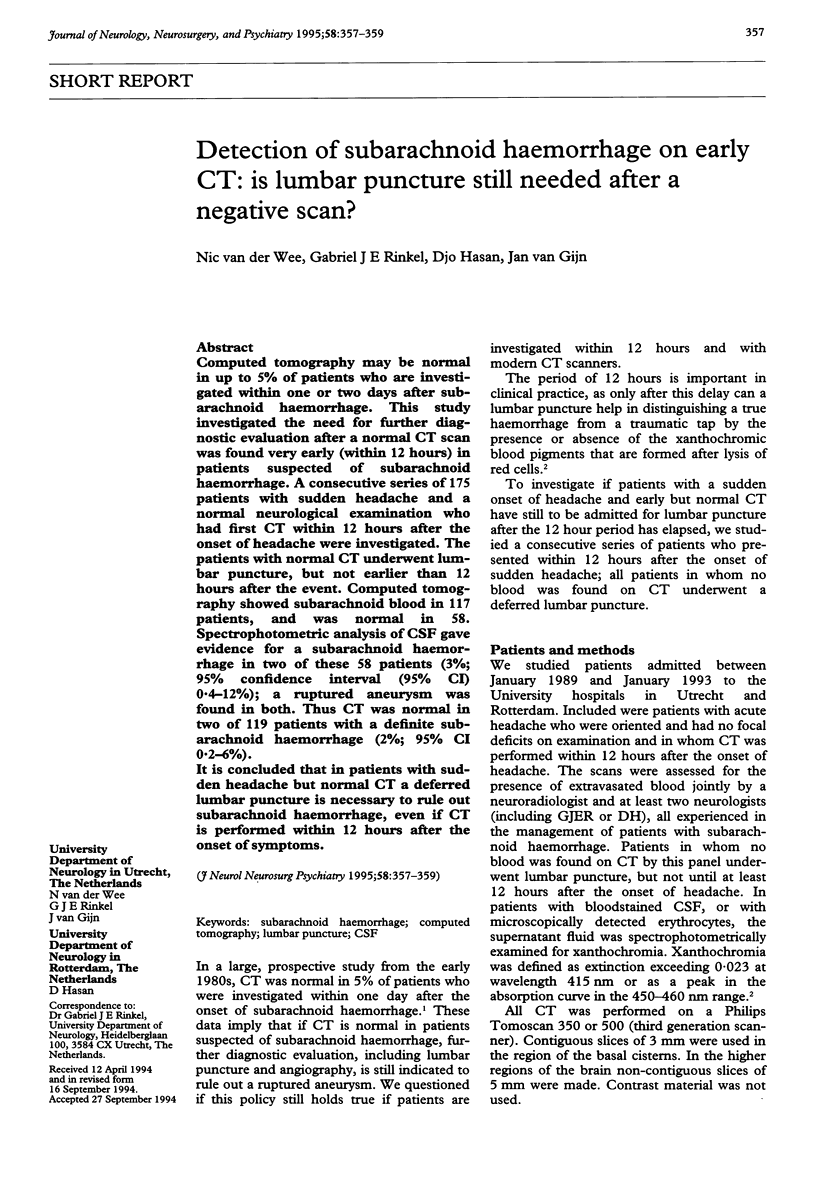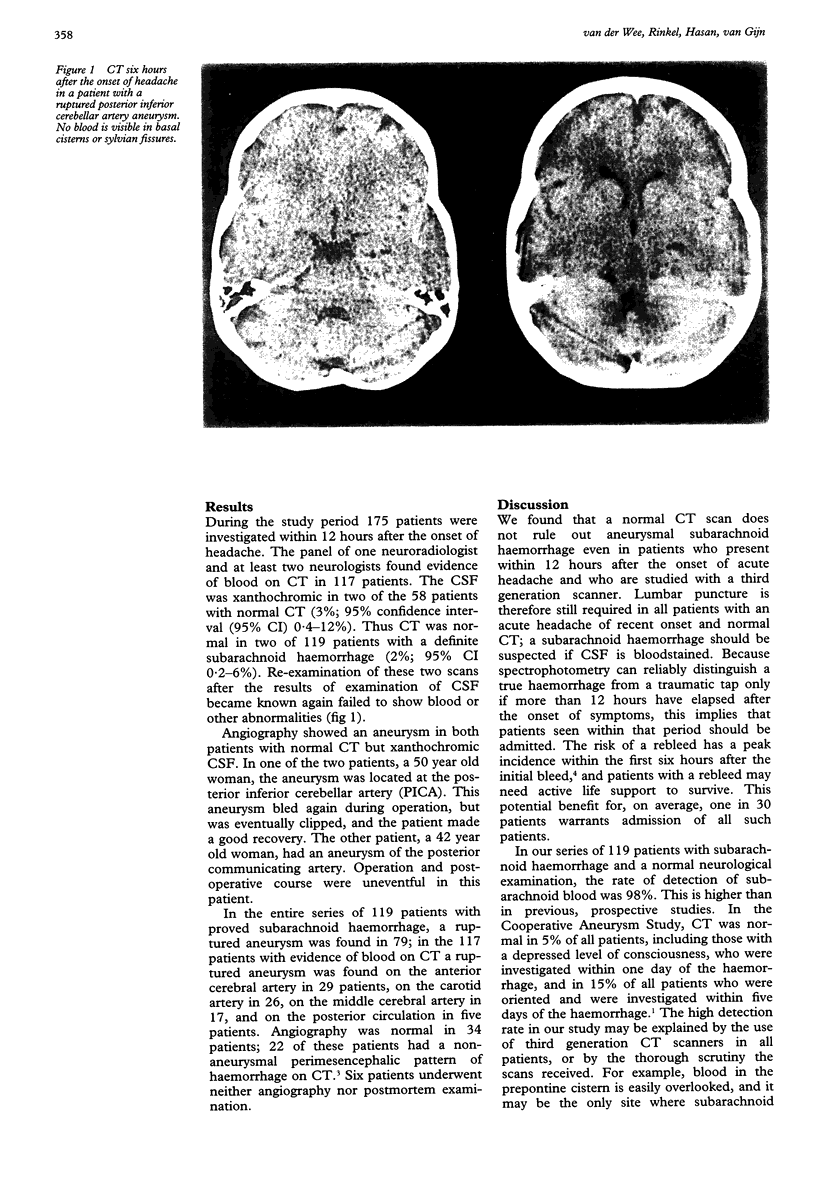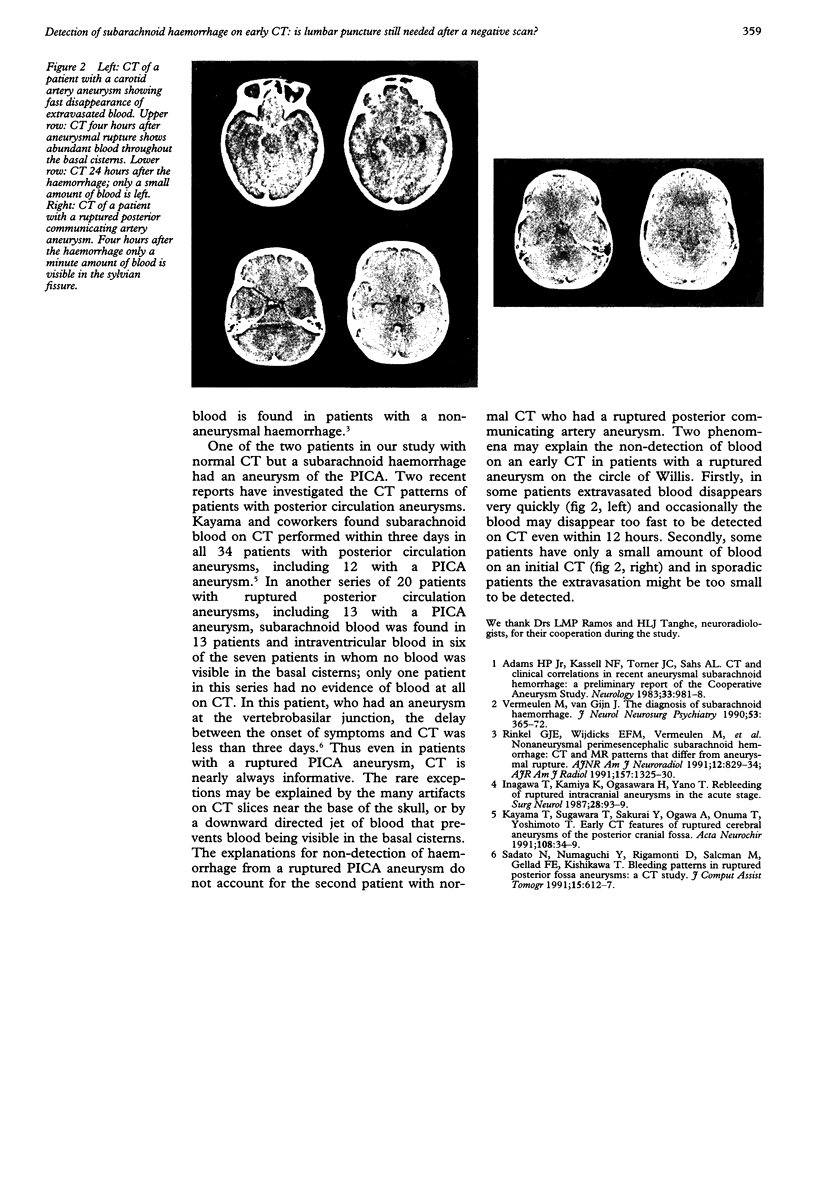Abstract
Computed tomography may be normal in up to 5% of patients who are investigated within one or two days after subarachnoid haemorrhage. This study investigated the need for further diagnostic evaluation after a normal CT scan was found very early (within 12 hours) in patients suspected of subarachnoid haemorrhage. A consecutive series of 175 patients with sudden headache and a normal neurological examination who had first CT within 12 hours after the onset of headache were investigated. The patients with normal CT underwent lumbar puncture, but not earlier than 12 hours after the event. Computed tomography showed subarachnoid blood in 117 patients, and was normal in 58. Spectrophotometric analysis of CSF gave evidence for a subarachnoid haemorrhage in two of these 58 patients (3%; 95% confidence interval (95% CI) 0.4-12%); a ruptured aneurysm was found in both. Thus CT was normal in two of 119 patients with a definite subarachnoid haemorrhage (2%; 95% CI 0.2-6%). It is concluded that in patients with sudden headache but normal CT a deferred lumbar puncture is necessary to rule out subarachnoid haemorrhage, even if CT is performed within 12 hours after the onset of symptoms.
Full text
PDF


Images in this article
Selected References
These references are in PubMed. This may not be the complete list of references from this article.
- Adams H. P., Jr, Kassell N. F., Torner J. C., Sahs A. L. CT and clinical correlations in recent aneurysmal subarachnoid hemorrhage: a preliminary report of the Cooperative Aneurysm Study. Neurology. 1983 Aug;33(8):981–988. doi: 10.1212/wnl.33.8.981. [DOI] [PubMed] [Google Scholar]
- Inagawa T., Kamiya K., Ogasawara H., Yano T. Rebleeding of ruptured intracranial aneurysms in the acute stage. Surg Neurol. 1987 Aug;28(2):93–99. doi: 10.1016/0090-3019(87)90079-6. [DOI] [PubMed] [Google Scholar]
- Kayama T., Sugawara T., Sakurai Y., Ogawa A., Onuma T., Yoshimoto T. Early CT features of ruptured cerebral aneurysms of the posterior cranial fossa. Acta Neurochir (Wien) 1991;108(1-2):34–39. doi: 10.1007/BF01407664. [DOI] [PubMed] [Google Scholar]
- Rinkel G. J., Wijdicks E. F., Vermeulen M., Ramos L. M., Tanghe H. L., Hasan D., Meiners L. C., van Gijn J. Nonaneurysmal perimesencephalic subarachnoid hemorrhage: CT and MR patterns that differ from aneurysmal rupture. AJNR Am J Neuroradiol. 1991 Sep-Oct;12(5):829–834. [PMC free article] [PubMed] [Google Scholar]
- Sadato N., Numaguchi Y., Rigamonti D., Salcman M., Gellad F. E., Kishikawa T. Bleeding patterns in ruptured posterior fossa aneurysms: a CT study. J Comput Assist Tomogr. 1991 Jul-Aug;15(4):612–617. doi: 10.1097/00004728-199107000-00016. [DOI] [PubMed] [Google Scholar]
- Vermeulen M., van Gijn J. The diagnosis of subarachnoid haemorrhage. J Neurol Neurosurg Psychiatry. 1990 May;53(5):365–372. doi: 10.1136/jnnp.53.5.365. [DOI] [PMC free article] [PubMed] [Google Scholar]




